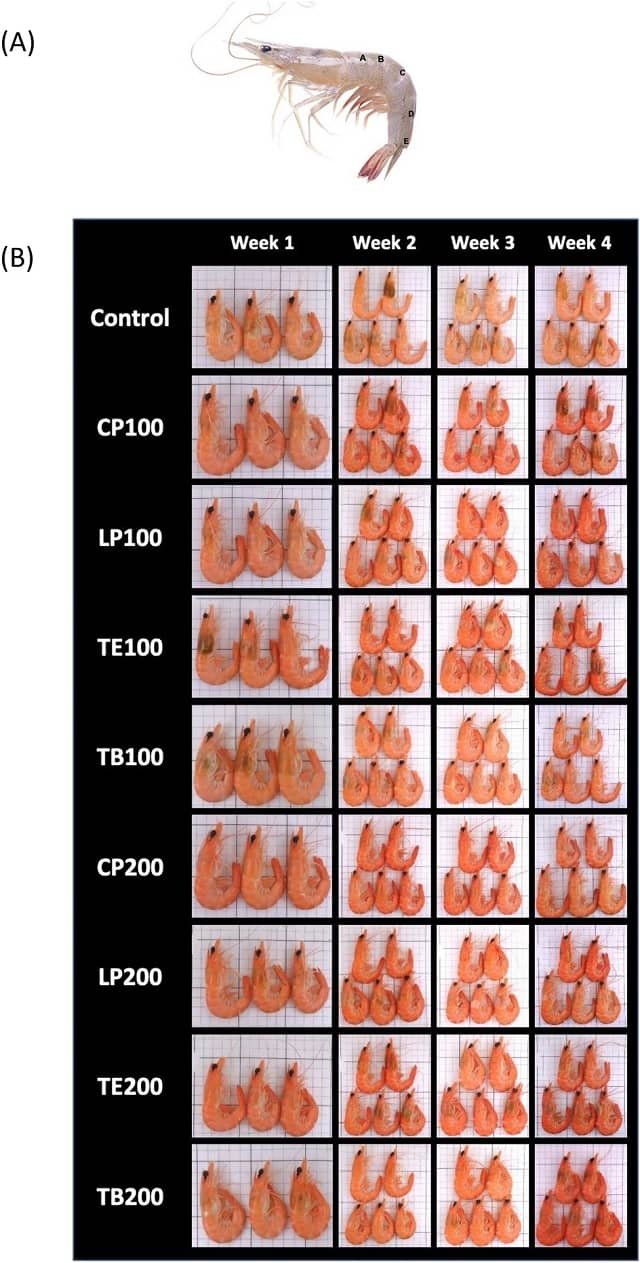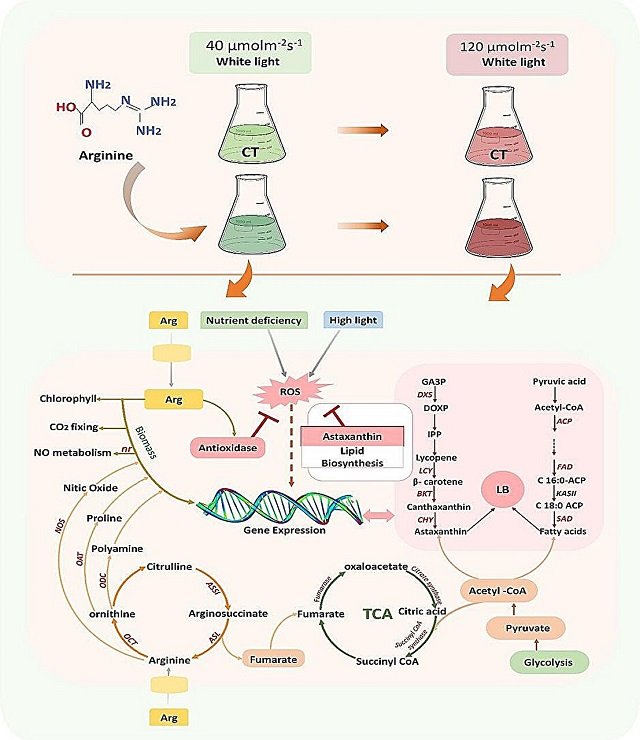
Are you looking for ways to improve the growth, immunity, and overall health of red tilapia? A new study has exciting news for tilapia farmers! Researchers have been exploring the potential of a natural pigment called astaxanthin to enhance the well-being of these popular fish.
Astaxanthin is a powerful antioxidant found in microalgae such as Haematococcus pluvialis. A study by scientists from Suez University (Egypt), Mansoura University, King Saud University (Saudi Arabia), University of Galway (Ireland), Al-Baha University, Port Said University, Zagazig University, and Arish University investigated the effects of feeding tilapia diets containing different amounts of this microalga.
Astaxanthin: nature’s antioxidant champion
- 1 Astaxanthin: nature’s antioxidant champion
- 2 The power of Haematococcus pluvialis
- 3 Improved growth and better intestinal health
- 4 Stronger immunity and reduced inflammation
- 5 Antioxidant power
- 6 Improved liver health
- 7 Reduced inflammatory response
- 8 Conclusion: astaxanthin for thriving red tilapia
- 9 Entradas relacionadas:
Astaxanthin is a ketocarotenoid, a type of natural pigment found in certain algae and microorganisms. It is known for its powerful antioxidant properties, which help combat harmful free radicals that can damage cells. But astaxanthin offers more than just antioxidant benefits. Studies suggest it can also act as an immunostimulant, strengthening the fish’s defense system.
The power of Haematococcus pluvialis
The study focused on the microalga Haematococcus pluvialis, a rich source of astaxanthin. The researchers fed hybrid red tilapia (Oreochromis niloticus x O. mossambicus) diets containing varying amounts of Haematococcus pluvialis powder. The results were promising!
Improved growth and better intestinal health
Fish fed diets with higher levels of Haematococcus pluvialis (1 g and 1.5 g per kg of feed) showed improved growth performance. This was evident in several ways, including:
- Reduced feed conversion ratio (FCR): This means the fish needed less feed to gain weight, indicating better efficiency.
- Increased final body weight (FBW), weight gain (WG), weight gain rate (WGR), and specific growth rate (SGR): All these measures point to faster and healthier growth.
- Improved intestinal morphology: Examination of the fish intestines revealed healthier structures, aiding better nutrient absorption.
Stronger immunity and reduced inflammation
Diets rich in astaxanthin also produced a significant boost in the immune system of the red tilapia. Here’s how:
- Enhanced phagocytic activity: This refers to the ability of immune cells to engulf and eliminate pathogens.
- Elevated levels of immunoglobulins (IgG and IgM): These are essential antibodies that fight infections.
- Increased production of nitric oxide: This molecule plays a crucial role in immune function.
- Reduced levels of myeloperoxidase (MPO): MPO is an enzyme associated with inflammation. Lower MPO indicates a calmer immune response.
Antioxidant power
As expected, astaxanthin from Haematococcus pluvialis significantly enhanced the fish’s antioxidant capacity. Diets with higher levels led to:
- Elevated levels of superoxide dismutase (SOD) and glutathione (GSH): These are powerful antioxidant enzymes that combat free radicals.
Improved liver health
The study also revealed positive effects on the fish’s liver, a vital organ for overall health. Here’s what the researchers observed:
Stay Always Informed
Join our communities to instantly receive the most important news, reports, and analysis from the aquaculture industry.
- Hepatoprotective effects: Examination of liver tissue sections indicated better liver health.
- Reduced levels of liver enzymes (ALT, AST, ALP, and GGT): Elevated levels of these enzymes often indicate liver damage.
- Lower serum levels of triglycerides (TG) and cholesterol: This suggests an overall healthier metabolic profile.
Reduced inflammatory response
The study also observed a notable decrease in inflammatory markers in fish fed higher doses of Haematococcus pluvialis. This suggests the potential of astaxanthin to modulate the immune response and promote a calmer internal environment.
Conclusion: astaxanthin for thriving red tilapia
This research highlights the immense potential of astaxanthin from Haematococcus pluvialis as a natural supplement for red tilapia aquaculture. By incorporating this powerful ingredient into their diet, fish farmers can potentially achieve:
- Improved growth performance
- Stronger immunity
- Enhanced antioxidant capacity
- Better liver health
- Reduced inflammation
More research is needed to optimize the exact dosage and explore long-term effects. However, this study offers a promising glimpse into the future of natural and sustainable aquaculture practices.
Contact
Samia Elbahnaswy
Department of Aquatic Animal Medicine, Faculty of Veterinary Medicine, Mansoura University
Mansoura, 35516, Egypt
Email: samiaahmed@mans.edu.eg
Reference
Eldessouki, E.A.A., Elshopakey, G.E., Elbahnaswy, S. et al. Influence of astaxanthin-enriched Haematococcus pluvialis microalgae on the growth efficacy, immune response, antioxidant capacity, proinflammatory cytokines, and tissue histomorphology of hybrid red tilapia. Aquacult Int (2024). https://doi.org/10.1007/s10499-024-01524-1
Editor at the digital magazine AquaHoy. He holds a degree in Aquaculture Biology from the National University of Santa (UNS) and a Master’s degree in Science and Innovation Management from the Polytechnic University of Valencia, with postgraduate diplomas in Business Innovation and Innovation Management. He possesses extensive experience in the aquaculture and fisheries sector, having led the Fisheries Innovation Unit of the National Program for Innovation in Fisheries and Aquaculture (PNIPA). He has served as a senior consultant in technology watch, an innovation project formulator and advisor, and a lecturer at UNS. He is a member of the Peruvian College of Biologists and was recognized by the World Aquaculture Society (WAS) in 2016 for his contribution to aquaculture.




